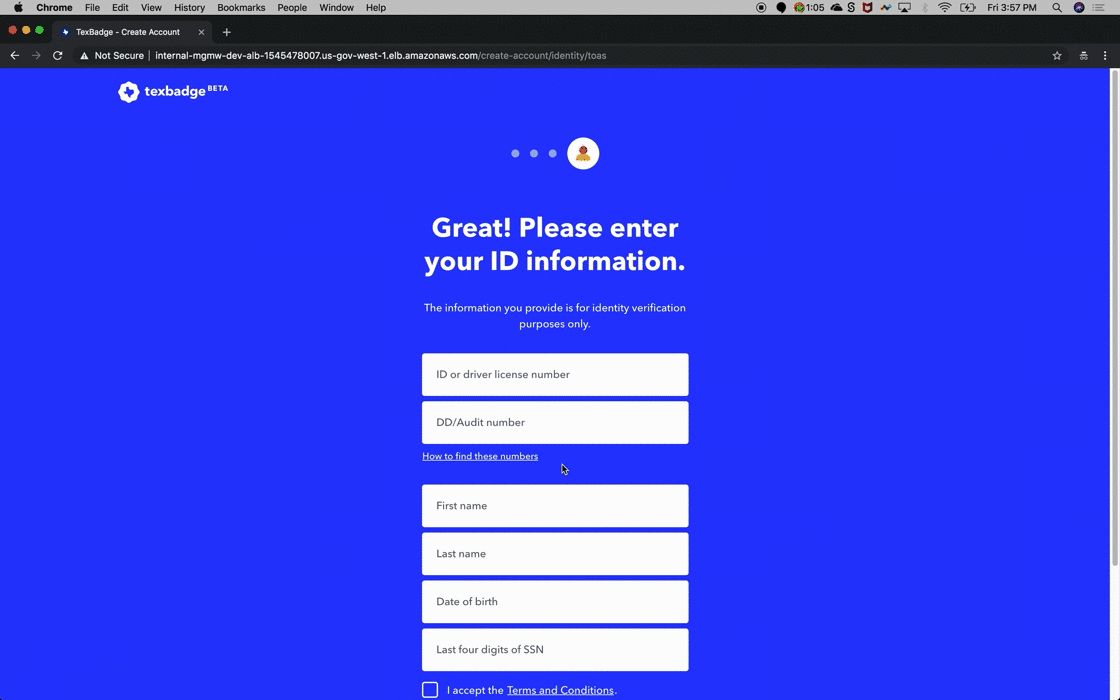TEXAS BY TEXAS (TxT)
BRIEF
Create an authenticated portal experience for citizens to conduct their business with the state quickly and easily.
industry
State Government
WHAT I DID
User Experience Lead
timeframe
May 2018—July 2021
MY ROLE
My role was to lead the design of the portal experience and integrated agency experiences. I lead our user research efforts, evaluated current agency experiences, workshopped (some discovery/some selling) with agency stakeholders, and worked closely with developers to create bespoke web services. When we ramped up for the larger integrations, I managed a team of 5 junior/senior UX designers.
THE PROJECT
The current Texas.gov experience is a single-page app that serves up links to the various state applications. The client (Texas Department of Information Resources (DIR)) wanted a portal to provide citizens with a modernized experience, an account where they could manage multiple relationships with the state, and receive reminders when things were due. There were three layers to the work. First was building the portal. Users would provide standard account information as well as be identity-proofed. Second was building the agency integrations. Agencies are not required to participate and many of the potential integration builds would require bespoke web services. Thirdly, a payment integration that didn’t take the user out of the experience (the legacy reality) would need to be built with the incumbent service provider.
Realities
Many agencies are on legacy platforms that don’t have APIs.
Agency budgets and roadmaps presented another layer of constraint
Shifting regulatory and political priorities can and did shift the direction of the work
RESEARCH
While the state did have data and research around usage and specific transactions, we had to do some guerrilla research as well. Many government transactions are compulsory so completions rates tend to be very high. We needed to research how people would respond to a one-stop shop approach. We cultivated a user base to interview about their experiences with state websites and transactions. We tested our early iterations with the same group, some industry-specific users (for pro license renewals), as well as users provided by DIR.
Where is the audit number on my driver license?
THE PORTAL
Designing the portal at the beginning was a mixture of pre-selected technology and prioritizing which requirements made sense for our launch product. Our design had to account for a standard account creation flow with the identity-proofing requirements of agencies. Several Texas websites utilize a service to verify identity with a Texas driver license or ID card. This is one of major conveniences of the platform but it adds friction and the potential for mistakes that could hinder account creation. We had to find a balance and provide a better experience.
Agency Integrations
Our launch integration with the Texas Department of Licensing and Regulation presented an opportunity to rethink some of the experience. In professional license flows, we’re pulling a profile, reviewing the information for updates, then submitting with payment. In discovery, we found redundant screens which are mainly to review and confirm information that doesn’t change. We were able to reduce the steps in the renewal flow from eleven to four. Evaluating these flows for opportunities to optimize is a significant part of the project. We don’t want to just give users a more modern look and feel, we want the experience to be easier and faster.
Userflow for the integrated TDLR License Renewal flow
Payment
The payment integration piece is arguably the most important part of the project. To the user, they don’t leave the experience. In the case of an issue, there are guardrails in place for the users and the agency. Additionally, the user can save the method of payment. Agencies vary in size and not having to solve for payment makes it easier for them to modernize their online services. Utilizing modern APIs makes for a more seamless experience and saves the taxpayers money.
SCALING
Finding patterns in the actions a citizen could take on the portal was a challenge for now and later. The initial integration targets were mainly repeatable actions like license renewals. But other integrations will be one-off actions like paying fees and requesting a report. We built consistent forms, interaction patterns, and UI elements that were an improvement on legacy experiences and it’s mobile responsive.







